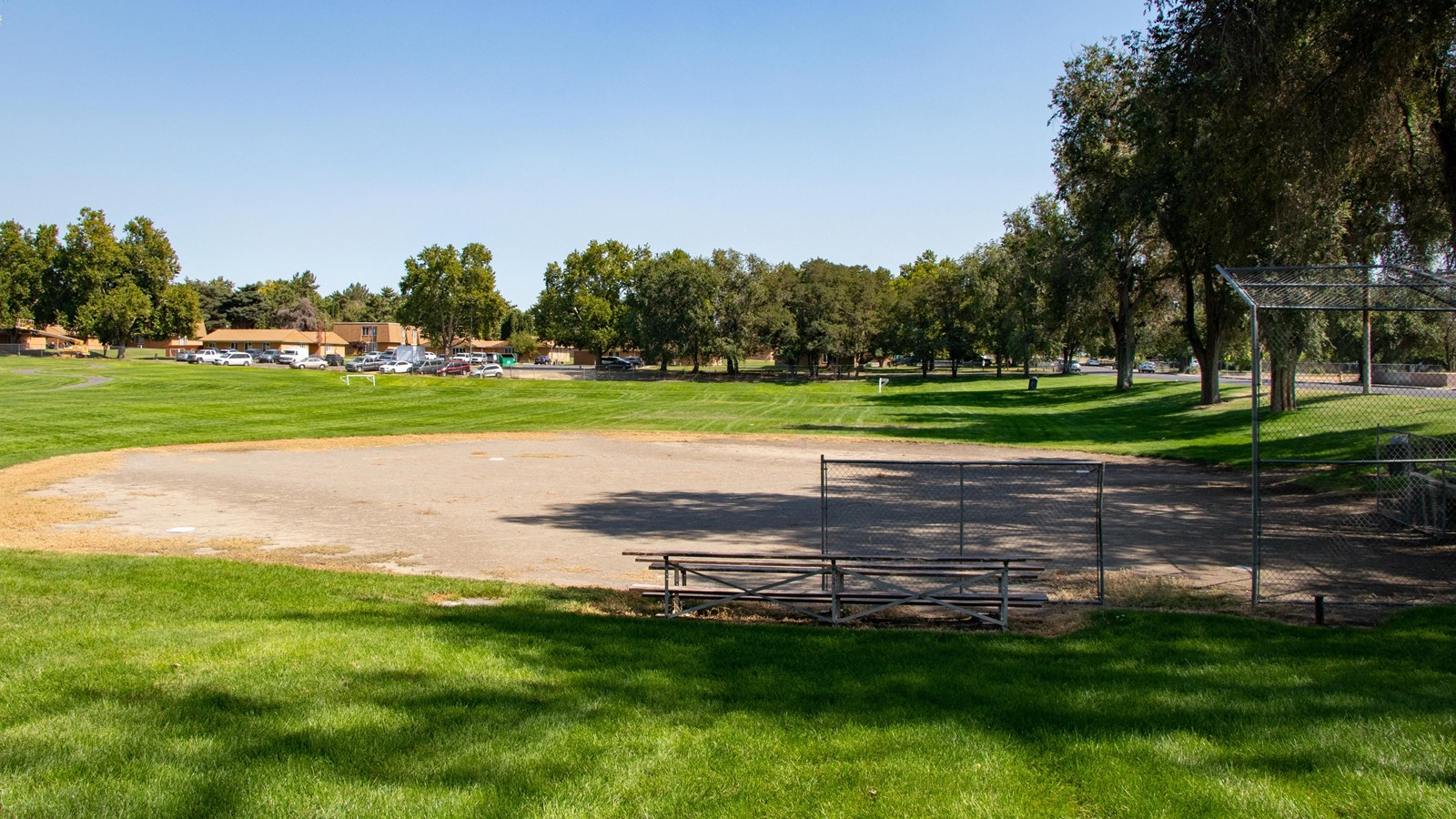Last updated: May 18, 2022
Place
Kurtzman Park

NPS/BURGHART
Workplace and residential segregation was common throughout the nation for much of the 1900s. The Hanford Site was no exception. DuPont, the government contractor that built and managed the site during the Manhattan Project, required African American employees who resided offsite to live in East Pasco, the area south of Lewis Street. Separated from the rest of Pasco by railroad tracks, East Pasco lacked many city services, including a city park.
Not having a city park east of the railroad tracks, local children created a baseball diamond--clearing tumbleweeds, filling holes in with shovels, wiring in a backstop—in the field where Kurtzman Park is located.
In the 1950s, local children created a baseball diamond in the field that became Kurtzman Park, clearing tumbleweeds, filling holes, and wiring in a backstop. Rebecca Heidlebaugh, a White attorney and civil rights champion, assisted a group of boys who successfully sought the donation of a 6 acre (2 hectare) tract of land to transform into a park. Members of the community, including the parents of the children who had lobbied for the park, leveled the ground, dug trenches, installed recycled pipes to create a water system, and planted trees. The City of Pasco seeded, landscaped, and maintained the open space. A sign for Candy Cane Park went up next to newly installed red-and-white playground equipment, but at the request of the land’s former owner, the City of Pasco renamed it Kurtzman Park.
The community also constructed Kurtzman Park Youth Center, using materials a local business donated. The center hosted tutoring programs, youth activities, a library, and community meetings. Virgie Robinson, for whom the nearby elementary school is named, served as the first manager of the youth center. Later, the city placed a police mini-station inside two rooms of the concrete-block building.
Kurtzman Park’s dedicated board members have kept the park alive. A family fun day has been integrated into the annual Juneteenth Celebration which brings together current and former East Pasco residents.
Continue Your Journey
Do you want to see other sites that tell the African American story of East Pasco? Visit the Green Bridge—the dividing line between Kennewick, a community that sought to exclude Blacks, and Pasco, a community that sought to confine Blacks. Stop by the Lewis Street Underpass to view the unofficial dividing line that segregated Pasco during the Manhattan Project. Go to Morning Star Baptist Church, the literal and figurative center of the African American community in East Pasco, to visit the city’s first Black congregation. Its roots date back to the Manhattan Project. Take a tour of B Reactor and stand in the shadow of this world-changing building that teams of African American laborers helped construct.
